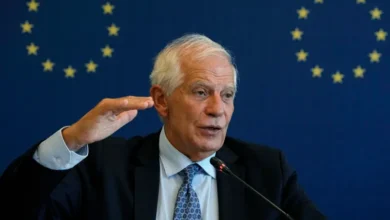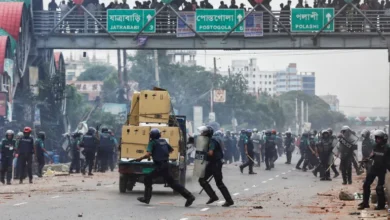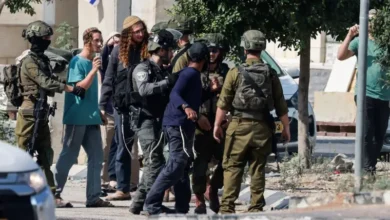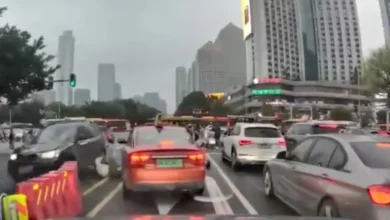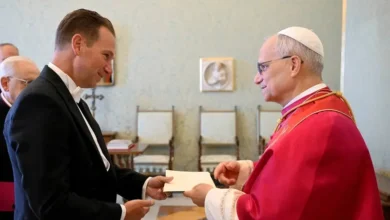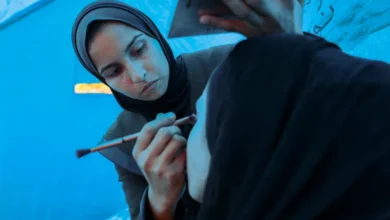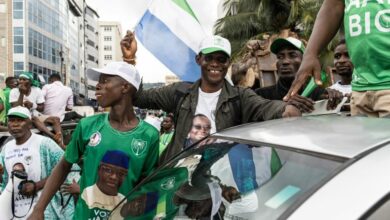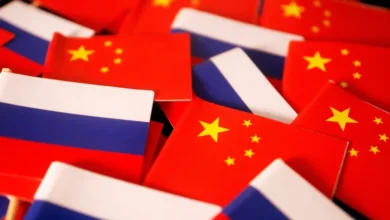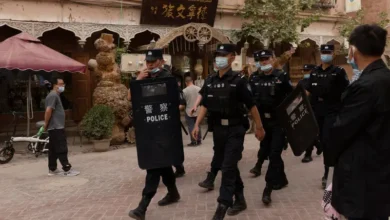Art as survival: Gaza’s creators transform pain into protest
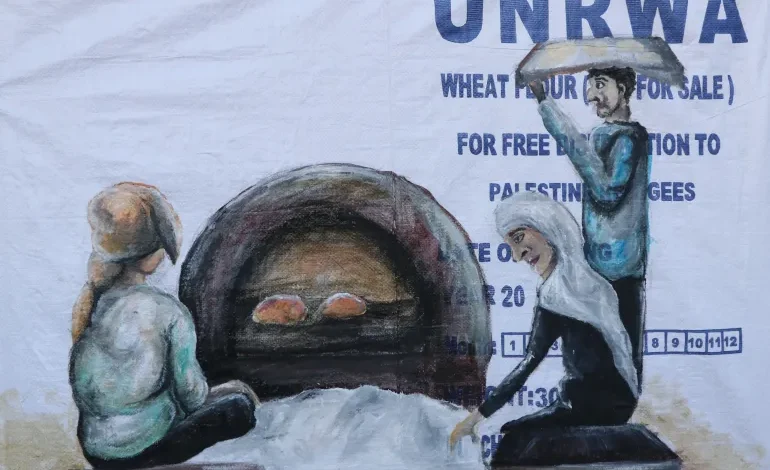
Amid the rubble of destroyed homes and the echoing booms of air strikes, Gaza’s artists sit with brushes in hand, transforming despair into defiance. Flour bags become canvases, humanitarian aid boxes are turned into portraits and every paint stroke tells a story.
For more than 76 years, Israel’s occupation has posed a threat to Palestinian culture through displacement and destruction. But even in the face of the current war, in which Israel has killed more than 61,700 Palestinians, Gaza’s artists refuse to disappear.
And some of the enclave’s artists have managed to turn pain into hope while portraying the harsh realities of war and displacement. With limited resources, they keep producing, saying their art reflects a will to survive.
The cultural devastation in Gaza includes the destruction of dozens of cultural centres, museums and artefacts, including ancient pottery and manuscripts. The ceasefire, which began on January 19, has provided a respite, but experts believe the full extent of the damage is unknown.
In the most recent official report on the situation, the Palestinian Central Bureau of Statistics and the Ministry of Culture said in March that 45 writers and artists had been killed in Gaza since the conflict erupted on October 7, 2023 and 32 cultural centres and 12 museums had been destroyed. The numbers are now likely far higher.
Among those killed is artist Mahasen al-Khateeb, who died in October in an Israeli air strike on the Jabalia refugee camp in northern Gaza. She was killed with her entire family.
Attempt to ‘erase’ Palestinian culture
While the Israeli military has consistently claimed that its operations focus on fighters involved in attacks on Israel, Gaza artists and art experts contend that Israel is intent on wiping out Palestinian culture.
Israel has “destroyed historical sites and ancient landmarks, erasing thousands of years of cultural heritage in Gaza”, said Sobhi Qouta, a visual artist and lecturer at Al-Aqsa University who also coordinates the Visual Arts Club at the Abdel Mohsin Al-Qattan Foundation. “Many Palestinian artists also lost their works whether through the bombing of their homes or the destruction of cultural centres housing these pieces.”
Palestinian art traces its roots to Byzantine influences and evolved through Islamic traditions. Post-1967 when Israel began occupying Gaza, art became a powerful tool of resistance with artists like Kamal Boullata and Suleiman Mansour using their work to assert Palestinian identity amid occupation.
Art education was incorporated into Gaza’s academic landscape in the mid-1990s with Al-Aqsa University’s fine arts programme. The artistic scene grew rapidly, boosted by the Eltiqa Group for Contemporary Art’s 2002 launch as Gaza’s first modern art space and followed by Shababeek For Contemporary Art in 2009. Despite conflict and the blockade of Gaza by Israel, Gaza’s art community thrived. But all major art spaces – Eltiqa, Shababeek, and Al-Aqsa – have been destroyed by Israel in the war.
The war profoundly influenced his artistic journey, and he turned to an unconventional medium: humanitarian flour bags as canvases. His paintings on the symbols of survival in a besieged land show cracks, fissures and other symbols that reflect the fractured existence of those in Gaza.
“When I paint on a flour bag, it feels as if I’m writing our history with a brush dipped in suffering and resilience,” al-Jerjawi said.
The choice of aid bags is a natural response to the scarcity of traditional art supplies in Gaza, al-Jerjawi said.
“In a refugee tent, surrounded by empty UNRWA flour bags, I decided to paint on them to capture the pain of war and my story of displacement,” he said, referring to the United Nations Relief and Works Agency for Palestine Refugees, the main aid agency for Palestinians.
Despite the war, al-Jerjawi participated in art exhibitions and workshops, including stints as a visual artist with the Qattan Foundation and at Shababeek. One of his paintings was showcased in the occupied West Bank at the Qattan Gallery, run by the Qattan Foundation, which has been instrumental in nurturing Gaza’s artistic community, supporting children in disciplines such as drawing, theatre and singing.
“Even after losing so much, my art remains my defiance,” he said.
Describing one of his paintings, al-Jerjawi said “bags of flour silently witness the stories of the displaced, waiting for survival. With printed words emphasising a frozen human condition, the raised, clenched hands – some gripping flour, others empty – speak to the desperate search for hope.”
